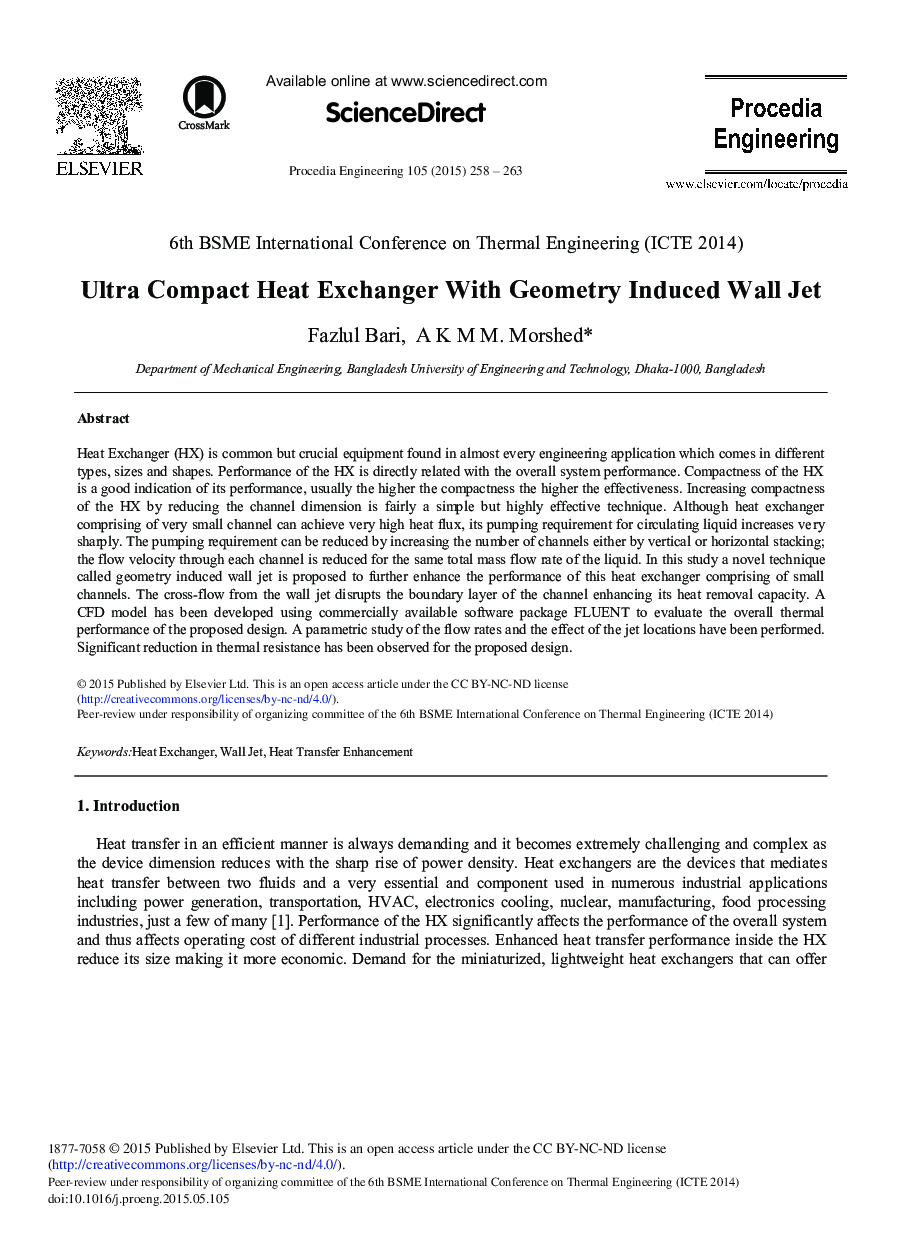| Article ID | Journal | Published Year | Pages | File Type |
|---|---|---|---|---|
| 856461 | Procedia Engineering | 2015 | 6 Pages |
Heat Exchanger (HX) is common but crucial equipment found in almost every engineering application which comes in different types, sizes and shapes. Performance of the HX is directly related with the overall system performance. Compactness of the HX is a good indication of its performance, usually the higher the compactness the higher the effectiveness. Increasing compactness of the HX by reducing the channel dimension is fairly a simple but highly effective technique. Although heat exchanger comprising of very small channel can achieve very high heat flux, its pumping requirement for circulating liquid increases very sharply. The pumping requirement can be reduced by increasing the number of channels either by vertical or horizontal stacking; the flow velocity through each channel is reduced for the same total mass flow rate of the liquid. In this study a novel technique called geometry induced wall jet is proposed to further enhance the performance of this heat exchanger comprising of small channels. The cross-flow from the wall jet disrupts the boundary layer of the channel enhancing its heat removal capacity. A CFD model has been developed using commercially available software package FLUENT to evaluate the overall thermal performance of the proposed design. A parametric study of the flow rates and the effect of the jet locations have been performed. Significant reduction in thermal resistance has been observed for the proposed design.
